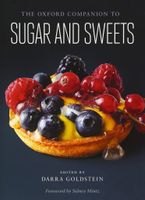Advertisement
Holidays
Published 2015
Among the oldest of the festive sweet foods for holidays, weddings, and christenings are the many variations of Lebkuchen (gingerbread). Not only are they traditional for Christmas, they are a familiar sight at the numerous saint’s day fairs. Carnival brings jelly doughnuts (Faschingskrapfen), whether in Transylvania or the Tyrol. See doughnuts. Enriched yeast breads crop up across the festive calendar in multiple forms: as the braided Czech vánočka for Christmas, or the similar Austrian Osterzopf for Easter. To make Reindling, a Carinthian Easter specialty, the baker rolls an enriched yeast dough, strudel-like, around a filling of raisins and walnuts and bakes it in a Bundt cake tin, while Czechs form a similar dough into round loaves and stud it with almonds to make mazanec for the holiday. Weddings have long been celebrated with a Gugelhupf in the German-speaking regions, a role mostly played by koláče north of the Danube. See gugelhupf. George Lang describes a Transylvania wedding confection called a menyasszonykalácsfa (bridal cake tree) or eletfa (life tree), made by dipping a stripped branch in batter before frying it and setting it in a cake base. This “tree” was then decorated with ribbons, small cakes, and edible figures.


